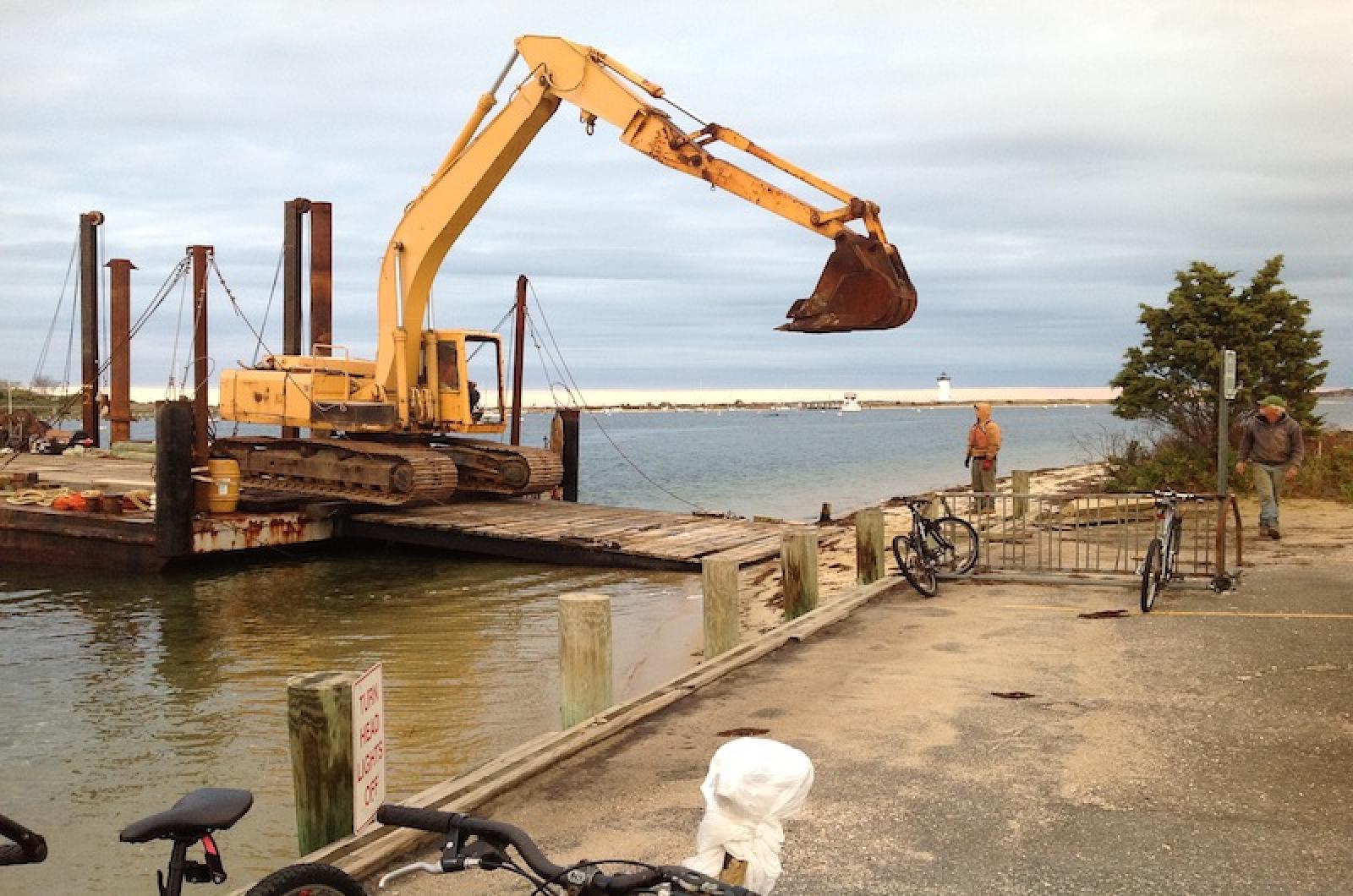With the failure of a previous plan to try to stem the erosion that threatens a Chappaquiddick house and a severe tropical storm headed up the East Coast early next week, the Edgartown conservation commission Wednesday approved a new emergency plan of action for the property.
In late September, the commission approved a plan for emergency stabilization at the Wasque home of Richard and Jennifer Schifter. The home near Poucha Pond is said to be at risk with the shoreline eroding at alarming rates. At the current rate of erosion, according to engineers, the 100-foot buffer between the bluff and a stone enclosure around the home could be gone in a matter of months.
The prior emergency certification by the conservation commission approved the installation of up to 320 linear feet of coir logs on the face of the eroding bank. The coir log system, which is made of coconut fiber, was constructed with 20-inch diameter, 10-foot-long coir (coconut fiber) logs placed end-to-end and tied together. They were held in place by 12-foot-long anchors drilled vertically into the beach face at the toe of the coastal bank, and anchors drilled into the coastal bank face.
But this week, the commission was told that this system did not work.
Coastal geologist W. Sterling Wall, speaking on behalf of the Schifters, said the coir logs were inadequate to deal with rough conditions, including high surf and high waters that have flooded the beach.
Most of the coconut fiber has washed away, he said, leaving the anchors in place. Ropes and netting have been recovered, he said.
Between August 28 and Oct. 25, Mr. Wall said, 30 to 35 feet of the bank was lost.
So at the end of last week, the contractor tried an alternative plan, he said: a coir envelope, which consists of coir netting filled with sand and pushed into a three-foot-high by 20-foot-long envelope of sand.
Mr. Wall said the sand would come from cutting into the coastal bank. He said that if current conditions continue and the envelopes are not installed, the coastal bank would be lost regardless.
The envelopes would weigh 2,700 pounds, he said, and plans call for the installation of three layers of the material this weekend, with high surf conditions expected from a tropical storm early next week.
He said an excavator would be brought over to the island by barge, with a second smaller piece of construction equipment brought over on the Chappaquiddick ferry.
Mr. Wall said a similar envelope system was used for emergency protection on the south shore of Nantucket.
As for a final solution, Mr. Wall said, there have been “extensive discussions” about moving the house, including exploring the acquisition of nearby land.
In response to a question from commission member Jeff Carlson, Mr. Wall admitted that work did start on the envelopes earlier in the week without permission from the town.
“That was an oversight,” Mr. Wall said. “We were remiss in not notifying the commission . . . we apologize for that.” He said they would work to regain the trust of the commission.
Conservation agent Jane Varkonda said that she became aware of the work and asked three times for the work to stop.
“I think we all realize the urgency with a storm coming,” commissioner Christina Brown said. “We all want to make sure that the paperwork is done because it is a very unusual situation.”
In the end, the commissioners approved the request to modify the emergency permit.
“We’re not saying this is going to work,” Ms. Varkonda warned.






Comments (6)
Comments
Comment policy »